Without a planned strategy, starting a company might result in issues like excessive expenditure, project delays, costly disasters, and many more. Instead of rushing into projects, the SDLC methodology may address such issues by delivering high-quality software as quickly, securely, and affordably as possible.
Everything a company needs to know to implement SDLC-based software development is explained in this article. We go into greater depth on each typical stage of a product’s life cycle, explain how SDLC methodologies function, and showcase the most dependable SDLC methodologies on the market.
What is SDLC?
The phases in the Software Development Life Cycle, or SDLC, are broken out comprehensively (planning, coding, testing, deploying, etc.). Companies design unique SDLCs to produce an iterative framework that is predictable and leads the team through all significant development stages.
An SDLC’s characteristics and the precise number of phases differ between companies and projects. The following stages are the most widely used models:
- Requirement analysis
- In-depth planning
- Product design
- Coding
- Testing
- Deployment
- Post-production maintenance
Using an SDLC strategy, a company may lay the groundwork for any software-related project on a tried-and-true basis. The team will work more quickly and consistently to produce a high-quality product, and the company will increase its abilities to:
- Keep projects on schedule and within the allotted budget
- Keep the bar for coding proficiency high
- Keep bugs and vulnerabilities out of the production environment
- Sync up product characteristics with company objectives
- Set the right priorities for your projects
- Prevent situations when team members are working on similar, competing, or unimportant activities
- Reduce the quantity of UX-impacting post-mortem fixes

SDLC Phases
Requirement Analysis
In the SDLC, the requirement analysis step is the most crucial and vital. With input from the client, the sales department, market surveys, and domain specialists in the business, it is carried out by the senior members of the team. The fundamental project strategy is then planned using this data, and a product feasibility assessment is then carried out in the financial, operational, and technological domains.
Planning
During the planning stage, it is also done to identify project risks and plan for the requirements for quality assurance. The technical feasibility study’s conclusion defines the numerous technical strategies that may be used to carry out the project effectively and with the fewest possible risks.
Design
“How will we achieve our goals?” The software specifications are converted into a design strategy known as the Design Specification to begin this phase of the SDLC. Then, after reviewing this strategy, all parties involved provide comments and recommendations. A strategy for gathering and including stakeholder feedback in this document is essential. It is nearly guaranteed that failure at this point will lead to cost overruns at best and the complete failure of the project at worst.
Development
During this phase of the SDLC, the product is actually developed and constructed. At this point, the programming code is created in accordance with Design Document Specification (DDS). Code generation may be completed quickly if the design is done in a precise and systematic manner.
Testing
Since testing activities are typically included in all stages of the SDLC in contemporary SDLC models, this stage is typically a subset of all the stages. However, this stage simply relates to the product’s testing phase, during which product flaws are discovered, monitored, corrected, and retested until the product satisfies the Software Requirement Specification (SRS)’s quality requirements.
Deployment
The product is formally released in the relevant market once it has undergone testing and is prepared for deployment. Depending on the organization’s business plan, product deployment may occasionally take place in phases. The product might be tested in a real business setting before being made available to a larger market (UAT – User acceptance testing).
What are the SDLC methodologies?
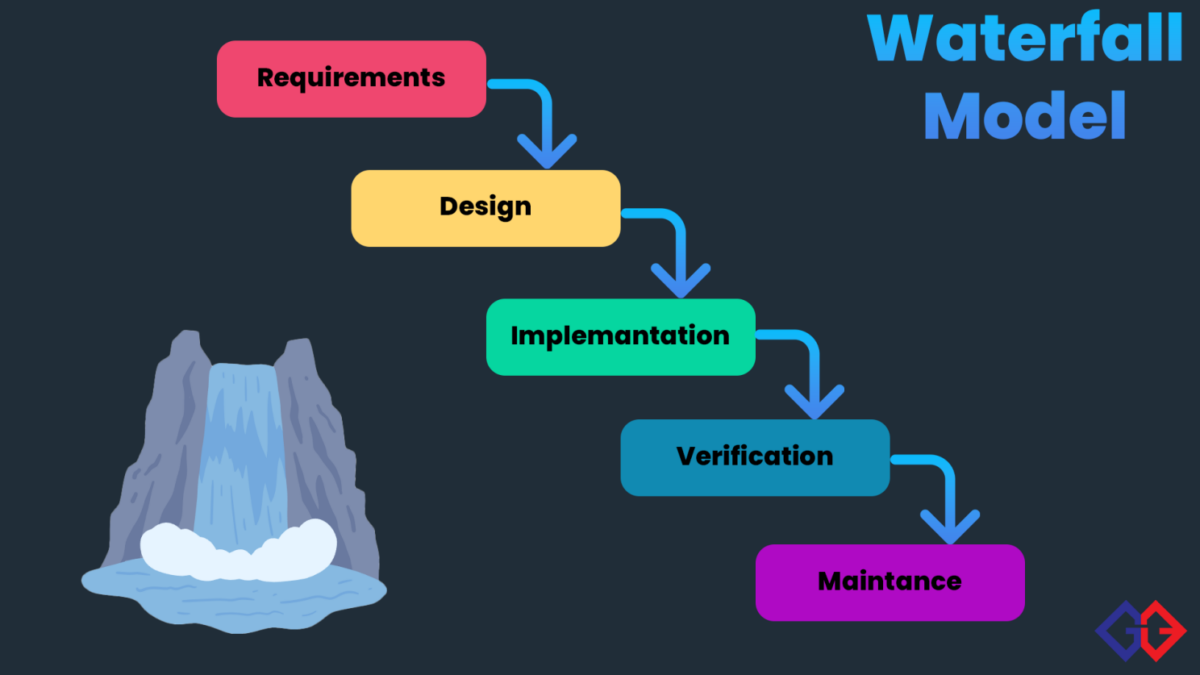
Waterfall Model
The earliest, most straightforward, and most regimented approach is the waterfall. All phases are carried out in order, and each one is dependent on the results of the one before it. This strategy instills discipline and produces a measurable result at the conclusion of each stage. However, when flexibility is needed, this paradigm falls short. Once a phase is declared finished, there isn’t much opportunity for modification since revisions might influence the price, the time it takes to deliver the program, and its quality.
Pros of this model:
- A tried-and-true process with a clear flow of phases that works well for straightforward goods.
- Every phase of the model includes a feasibility analysis, which helps to get rid of data silos and bottlenecks.
- Each stage ends with a measurable product.
- A straightforward SDLC that is easy enough for everyone to grasp.
Cons of this model:
- It is extremely stiff and unsuitable for current DevOps teams, who want greater flexibility and code modifications at each stage.
- As there is no ability to skip any phases, it is not a smart choice for working on tasks that need to be completed quickly.
- Once a phase is completed, there is limited space for adjustment (at least not without affecting the cost and delivery time).
- Not the best choice for projects whose demands change or are unpredictable.
- Long development times.
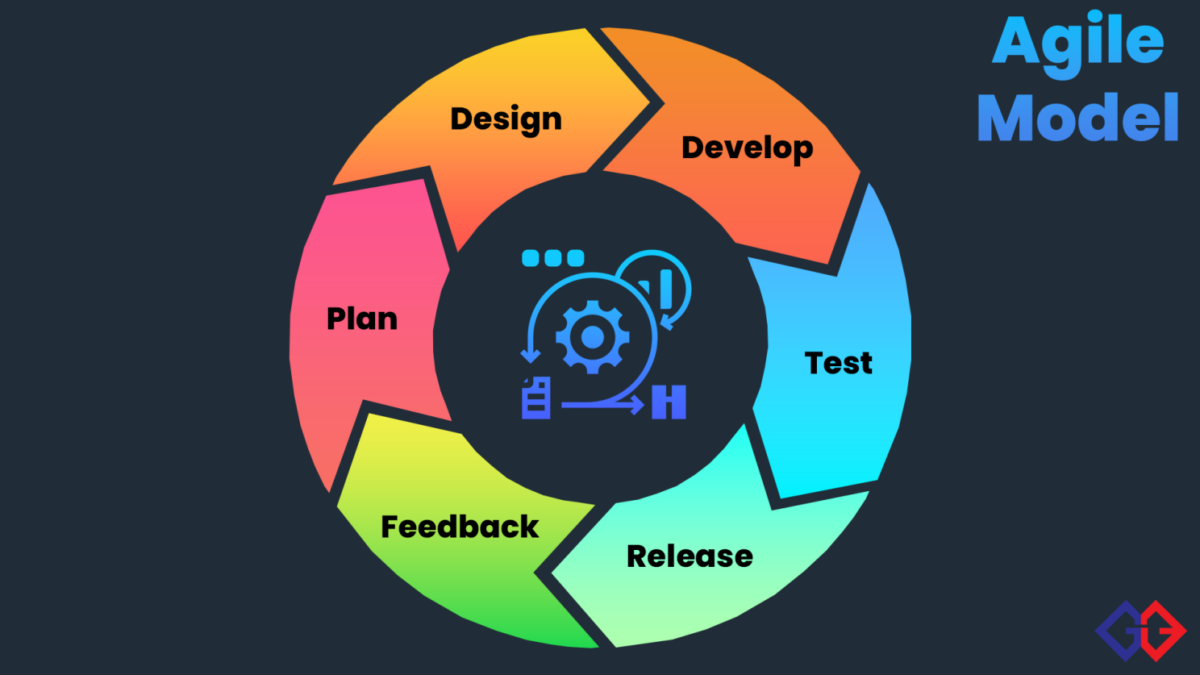
Agile Model
Continuous release cycles are produced by the agile methodology, and each one includes minor, incremental modifications from the preceding release. The end result is checked after each repetition. Before they grow into bigger issues, the agile methodology assists teams in identifying and resolving minor challenges in projects. Throughout the development process, teams can involve business stakeholders and solicit their feedback.
Pros of this model:
- The preferred strategy for companies looking to stay up with quickly evolving industries.
- A perfect fit for DevOps ideas.
Focuses on code quality from the beginning of an SDLC. - Identifies problems and takes action before they become serious ones.
Makes it simple to obtain insightful input from end users and stakeholders.
Regular testing is strongly encouraged to improve cybersecurity.
Cons of this model:
- Need a team with a lot of experience and expertise.
- It might be difficult to maintain documentation in an agile SDLC that moves quickly.
- Continual, hard sprints deplete a team.
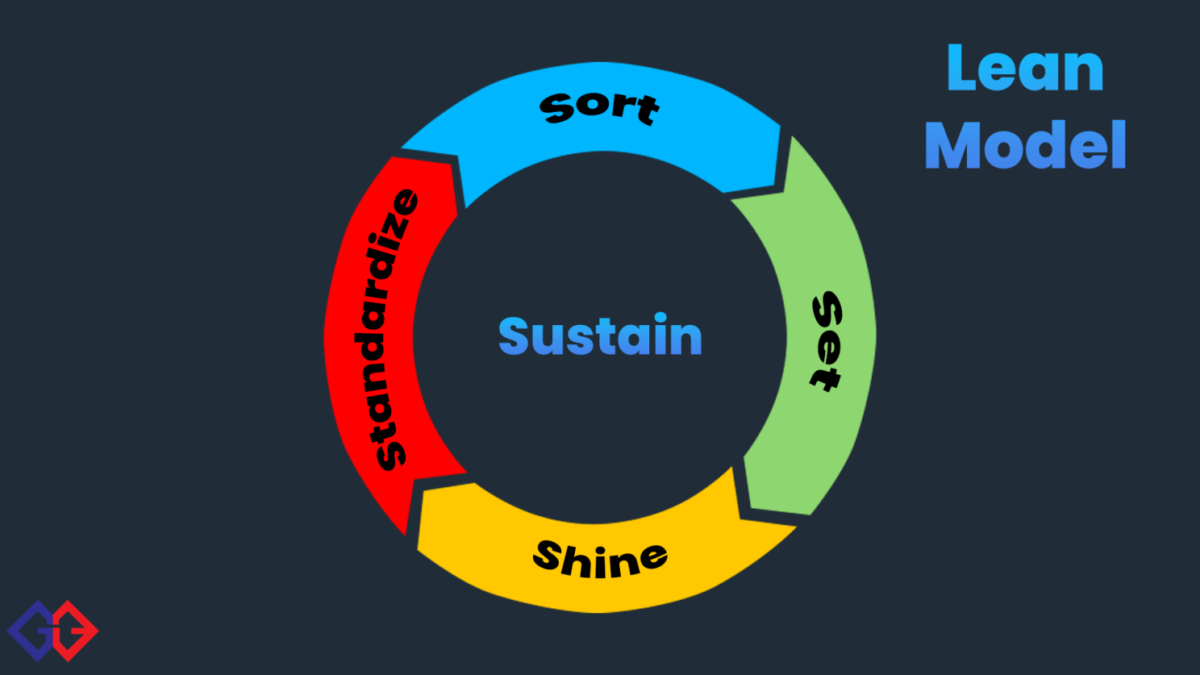
Lean Model
The ideas and techniques used in lean manufacturing are incorporated into the lean methodology for software development. The lean principles promote enhancing workflow and fostering a culture of continual improvement. The following are the seven lean principles:
- Reduce unnecessary waste
- Enhance learning
- Delay decisions as much as possible
- Deliver as quickly as possible
- Encourage your team.
- Develop integrity
- Construct holistically
Pros of this model:
- A simplified methodology enables the delivery of greater functionality in less time.
- Eliminates pointless activity, which can save expenses.
- Gives the development team the authority to make choices, which may also be motivating.
Cons of this model:
- Depends heavily on the team, which makes it less scalable than competing frameworks.
- Strong documentation is necessary, and failing to do so might lead to errors.
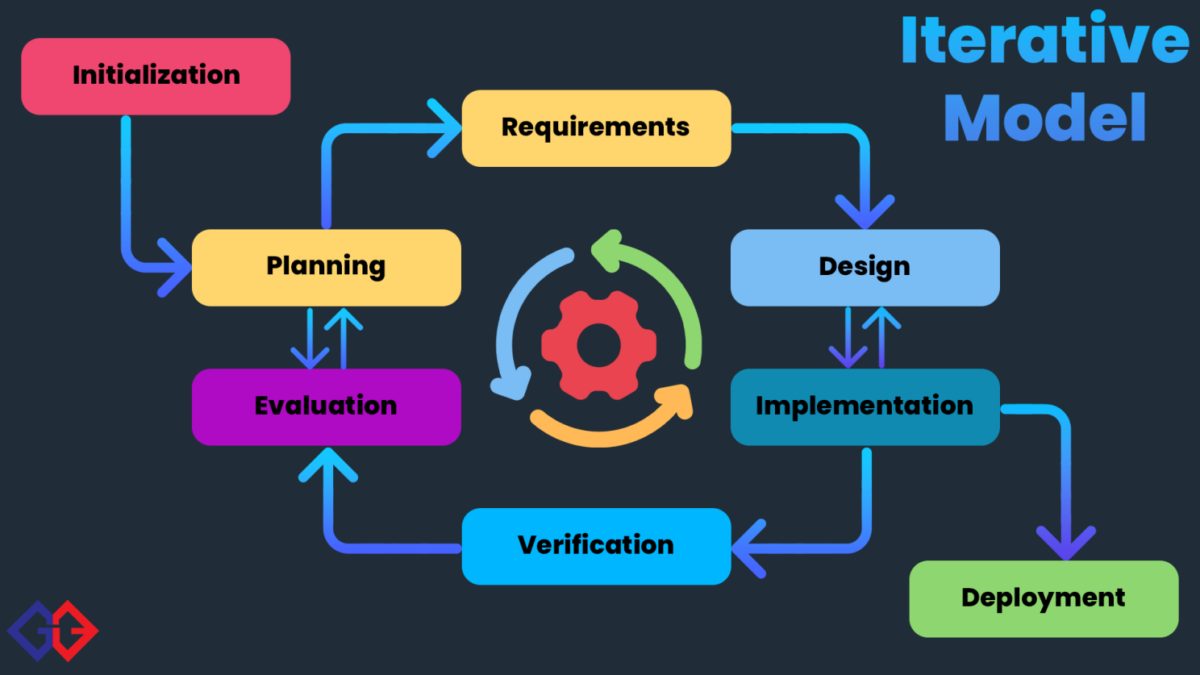
Iterative Model
Each iterative development cycle results in an unfinished but usable version of the software. Each succeeding version adds more needs whereas the initial iteration only implements a small subset of the software requirements. The whole set of requirements is present in the most recent iteration.
Pros of this model:
- Simple to adapt for modest to moderate changes in product specifications.
- Input from users and stakeholders is gathered at each iteration.
- Regular risk analysis guarantees product security by design and helps you find errors early in the SDLC.
- It is simpler to manage the finished product and track progress when projects are divided into smaller pieces.
Cons of this model:
- Requires that you have a firm grasp of the product requirements before releasing the first version.
- The methodology burdens stakeholders and consumers by requesting constant input.
- Resources quickly if left uncontrolled.
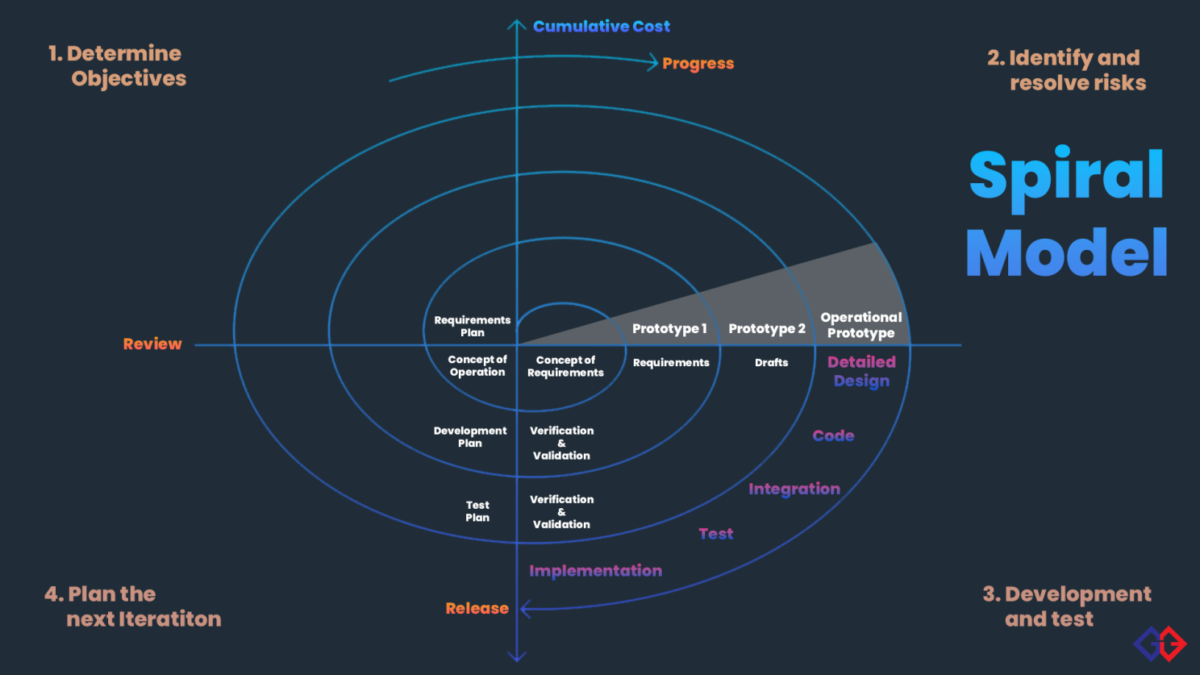
Spiral Model
The spiral model, which emphasizes repetition and is the most adaptable of the SDLC models, is comparable to the iterative approach in this regard. The spiral model repeatedly passes through the steps of planning, design, building, and testing, improving gradually with each iteration.
Pros of this model:
- In the event of a mistake, the team may quickly reverse the cycle.
- This SDLC is the preferred choice for companies in compliance-intensive sectors due to thorough risk assessments.
- A perfect match for substantial projects with ambiguous objectives and scope.
- Enables teams to swiftly adjust to consumer expectations.
- Little chance of negatively affecting the UX.
Cons of this model:
- If the team undergoes an excessive number of iterations, the cost frequently spirals out of control.
- Need a knowledgeable team to decide when to conclude iterations and go to the following SDLC phase.
- For smaller projects with minimal dependencies and straightforward criteria, this is “overkill.”
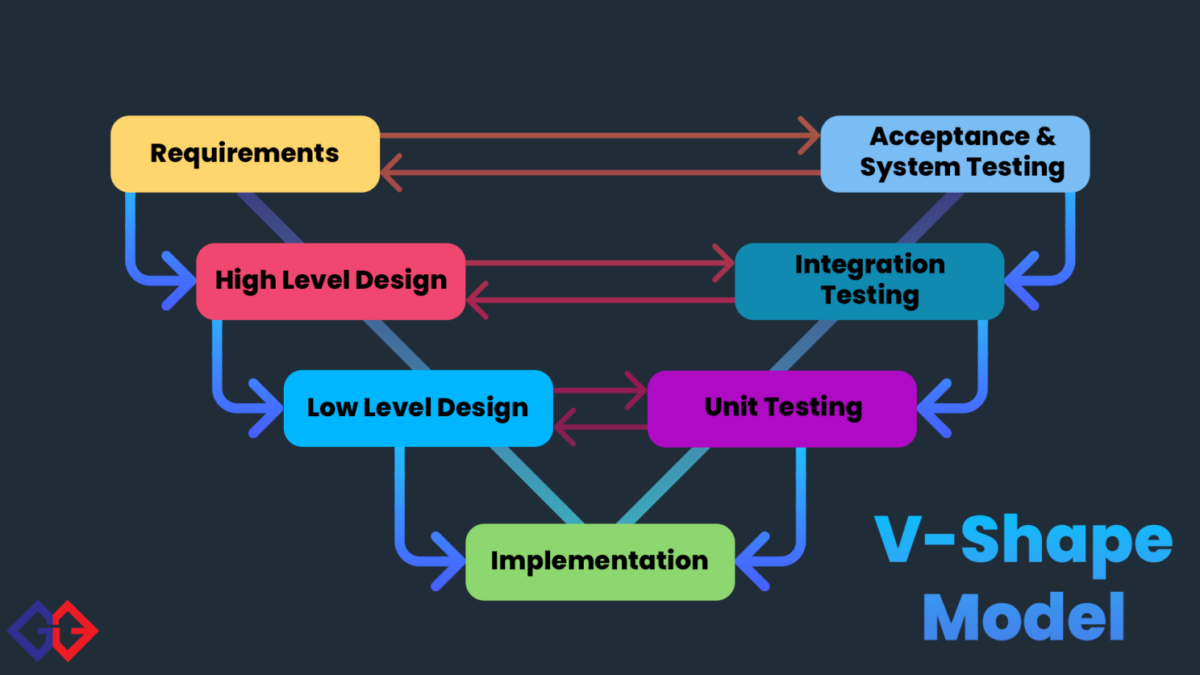
V-Shaped Model
Verification and validation steps are carried out simultaneously in the V-shaped model. The model is run in a V-shape, with each development step having a corresponding testing phase, and each verification phase having an accompanying validation phase.
Pros of this model:
- Software testing is prioritized.
- A straightforward and uncomplicated SDLC process.
- Development of the waterfall methodology with better fault detection.
- A perfect choice for modest projects with precisely defined criteria that remain constant over time.
Cons of this model:
- Similar rigidity problems to the waterfall method.
- Due to the absence of an integrated maintenance phase, the paradigm cannot be used for continuing software projects.
- Cost increases are frequently caused by later modifications to the requirements.
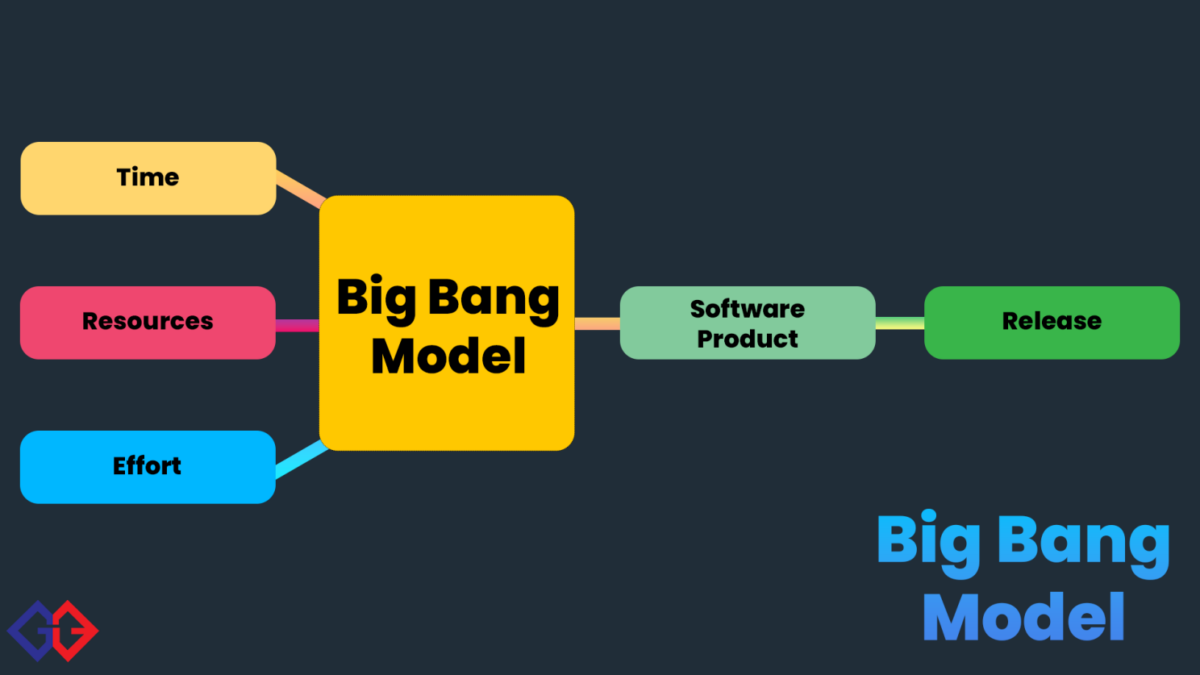
Big Bang Model
This high-risk SDLC approach is most effective for small projects and devotes the majority of its resources to development. It lacks the other approaches’ comprehensive requirements specification stage.
Pros of this model:
- A low-investment SDLC strategy with significant potential for payoff but little time or financial risk.
- Relatively little planning is necessary.
- An excellent choice for straightforward, inexpensive items that don’t interact with customers.
- A logical option for little teams and companies without rigid formal procedures.
- Enables developers to work on the product however they see fit.
Cons of this model:
- Big bangs are incredibly prone to mistakes because to the absence of prior preparation.
- Does not have any testing steps built into it.
- Not a wise choice for significant, continuing, or complicated tasks.

DevOps Model
Like Lean, DevOps may work with Agile to provide an infrastructure that removes the obstacles that delay software development and delivery. Similar to how Agile incorporated testing and business analysis into software development, DevOps completely integrates software deployment and operation into the agile development process. In the end, the team is given the freedom to be independent and assume responsibility for software development, delivery, and support. Continuous Delivery (CD) is used to maintain a high-quality, well-tested codebase and for frequent releases.
Pros of this model:
- Software development teams may ship and maintain software without the help of the IT or technical operations teams since they are independent.
- The deployment procedure has been automated and improved. With little work, a junior developer may learn to deploy securely.
- Continuous Integration / Continuous Delivery (CI/CD) is implemented by teams.
- Engineers can concentrate on code by saving time on deployment with the correct tools.
- Integrated feedback loops throughout the entire process.
Cons of this model:
- DevOps specialists are less accessible.
- The cost of infrastructure in a DevOps environment is substantial.
- The continuous integration of automation initiatives may experience issues due to a lack of DevOps understanding.
Benefits of the SDLC
When the SDLC is done correctly, the maximum level of management control and documentation is possible. The purpose of what and how the developers should build is clear. All sides recognize the objective up front and have a specific plan on how to get there. Everyone is aware of the expenses and resources needed.
A number of issues might make an SDLC implementation more of a hindrance than a benefit for development. A poor knowledge of the system requirements from the onset might arise from failing to consider the demands of customers, users, and stakeholders. Only if the strategy is meticulously followed will the advantages of SDLC be realized.
Benefits of a well-defined software development life cycle that meets company objectives include:
- Lower expenses for development.
- Increased software product quality.
- More transparency regarding the development team’s actions.
- Quicker time to market as a result of improved management, greater transparency, and fewer post-mortem repairs.
- More accurate scheduling, budgeting, and project planning.
- Communication between various sections and higher management has improved.
- A better UX as a result of fewer bugs and mistakes making it into production.
- Less risk of a project failing.
- Increased accuracy and quality of documentation.
- A thorough comprehension of company and client demands.
- More chances for project stakeholders to provide feedback (especially crucial in the early stages of product development).
- An improved comprehension of the team’s present capabilities and prospective development areas.
- A higher rate of staff retention since developers like to work on well-run, SDLC-based projects.
SDLC Best Practices
The most crucial best practice to incorporate into your SDLC is excellent team communication. The odds of success increase with alignment.
An effective SDLC shows the following characteristics:
- The effective implementation of a thorough application security program
- Code quality requirements
- Effective teamwork across organizations
- Streamlined processes
- Cross-team participation throughout the life cycle
Common SDLC errors and difficulties
An SDLC implementation risks being negatively impacted by a number of issues. A failure to sufficiently account for and fulfill client and stakeholder demands in the process is likely the most serious error. As a result, the system requirements are misunderstood, and the final output is always disappointing.
Furthermore, the complexity of the SDLC frequently results in projects going off track or teams losing sight of details and needs. A project might easily fall short if none of the specifications and design plans are strictly followed.
This article is cited from Webgeaz Sdn. Bhd. LinkedIn

